There's a supermassive black hole at the centre of our Galaxy, the Milky Way, and it's called Sagittarius A*.
It's the closest supermassive black hole to Earth, and astronomers have been able to capture images of it using some of humanity's most powerful telescopes.
To be more precise, astronomers have managed to capture images showing the effects of Sagittarius A*, but not directly image the black hole itself.

That's because black holes are objects from which not even light can escape, meaning they can't be directly observed or photographed.
But as matter falls in towards a black hole, it heats up and glows in different wavelengths of light like X-ray, radio and infrared.

Black holes for beginners
Black holes are common throughout the Universe.
They aren’t holes, portals or cosmic vacuums either: they’re the result of infinitely dense points that cause spacetime to warp around them, so not even light can escape.
Black holes range in size from masses a few times that of our Sun to giants with billions of times that mass.
As a result, there are a few different types of black hole, and they likely form in very different ways.

Stellar-mass black holes are the last stage of stellar evolution for massive stars.
When these massive balls of gas run out of fuel, they no longer experience an outwards pressure resisting the pull of their own gravity.
They collapse, creating a singularity – a point of infinite density – while their outer layers rebound in a supernova explosion.
A stellar-mass black hole is typically five to 10 times the mass of our own Sun.
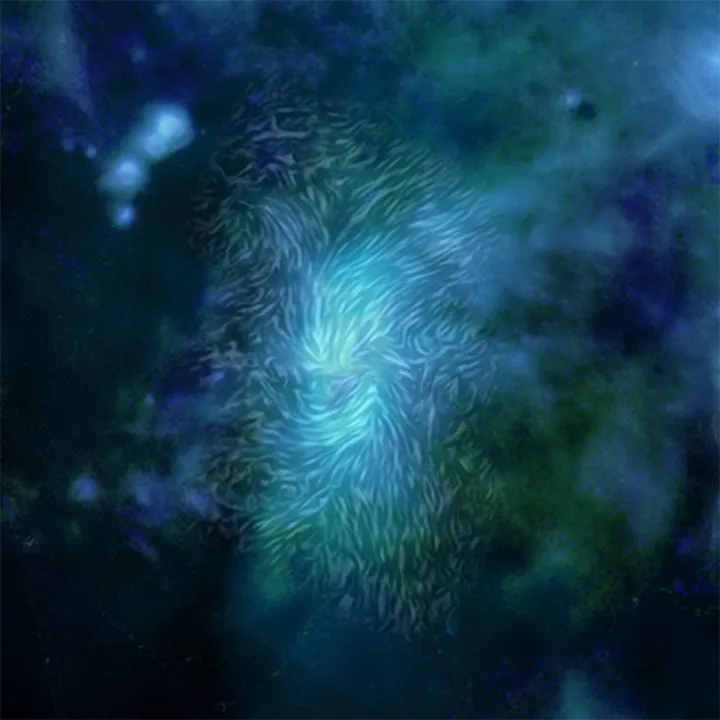
Intermediate-mass black holes are around 100 to 100,000 times the mass of our Sun.
Scientists theorise they could come about through several stellar-mass black holes merging, or from the collision of multiple massive stars in globular clusters.
The largest are supermassive black holes, which are millions or even billions of times the mass of our Sun and are thought to lie at the centre of most major galaxies.
Our own Galaxy, the Milky Way, has a supermassive black hole at its centre, which is known as Sagittarius A* (Sgr A*).
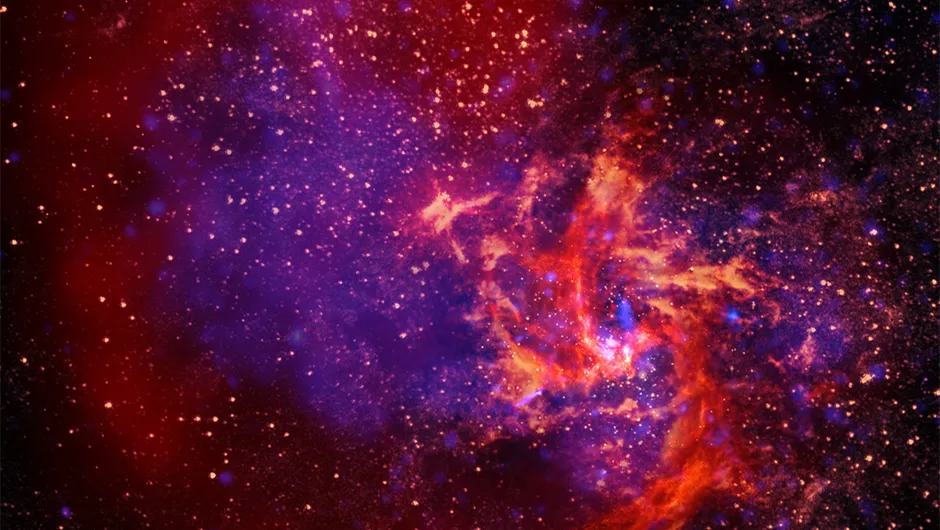
Discovery of Sagittarius A*
The supermassive black hole at the centre of our Galaxy, Sagittarius A* has a mass of about four million suns, which is quite small for a supermassive black hole.
It's over 26,000 lightyears from Earth, but is still our closest supermassive black hole.
Sagittarius A* was first observed as a mysterious radio source in the constellation of Sagittarius.
By the 1980s, it was considered likely to be a black hole, and that was confirmed by Andrea Gherz and Reinhard Genzel, who won the Nobel prize for the discovery in 2020.
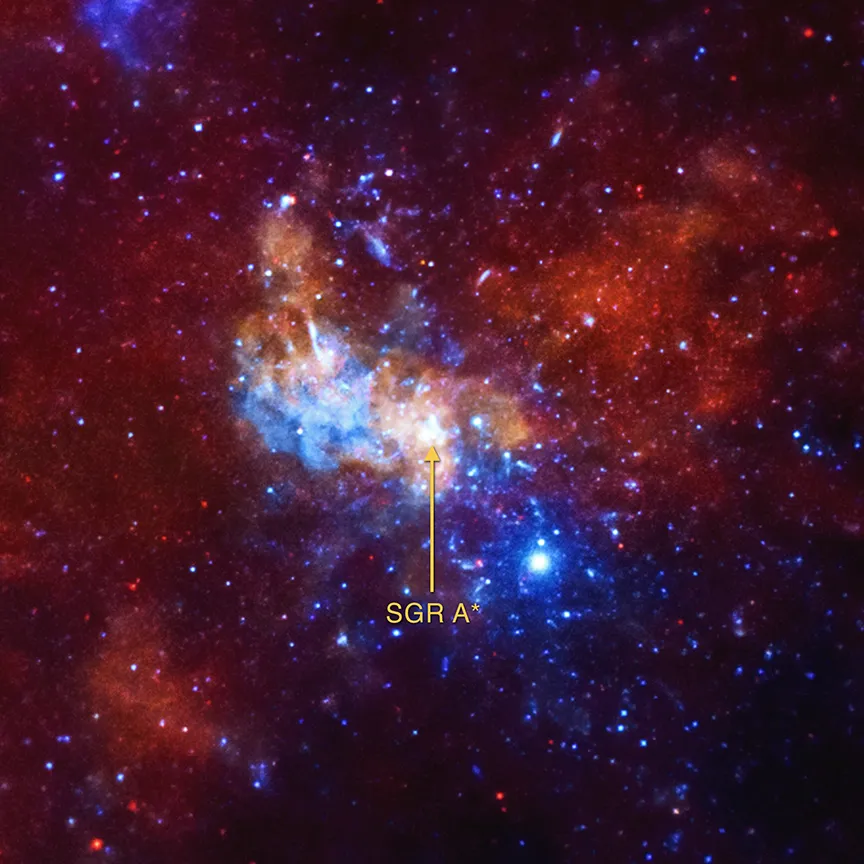
Observing and photographing black holes
We can't see black holes because they're invisible to the human eye, but we can pinpoint them because of their effect on nearby space and matter.
And this is true of Sagittarius A* at the centre of our Galaxy, as the images here show.
There are a few ways of indirectly observing our supermassive black hole, from the glow of in-falling matter, to the black hole's effect on spacetime or even by observing stars in orbit around it.
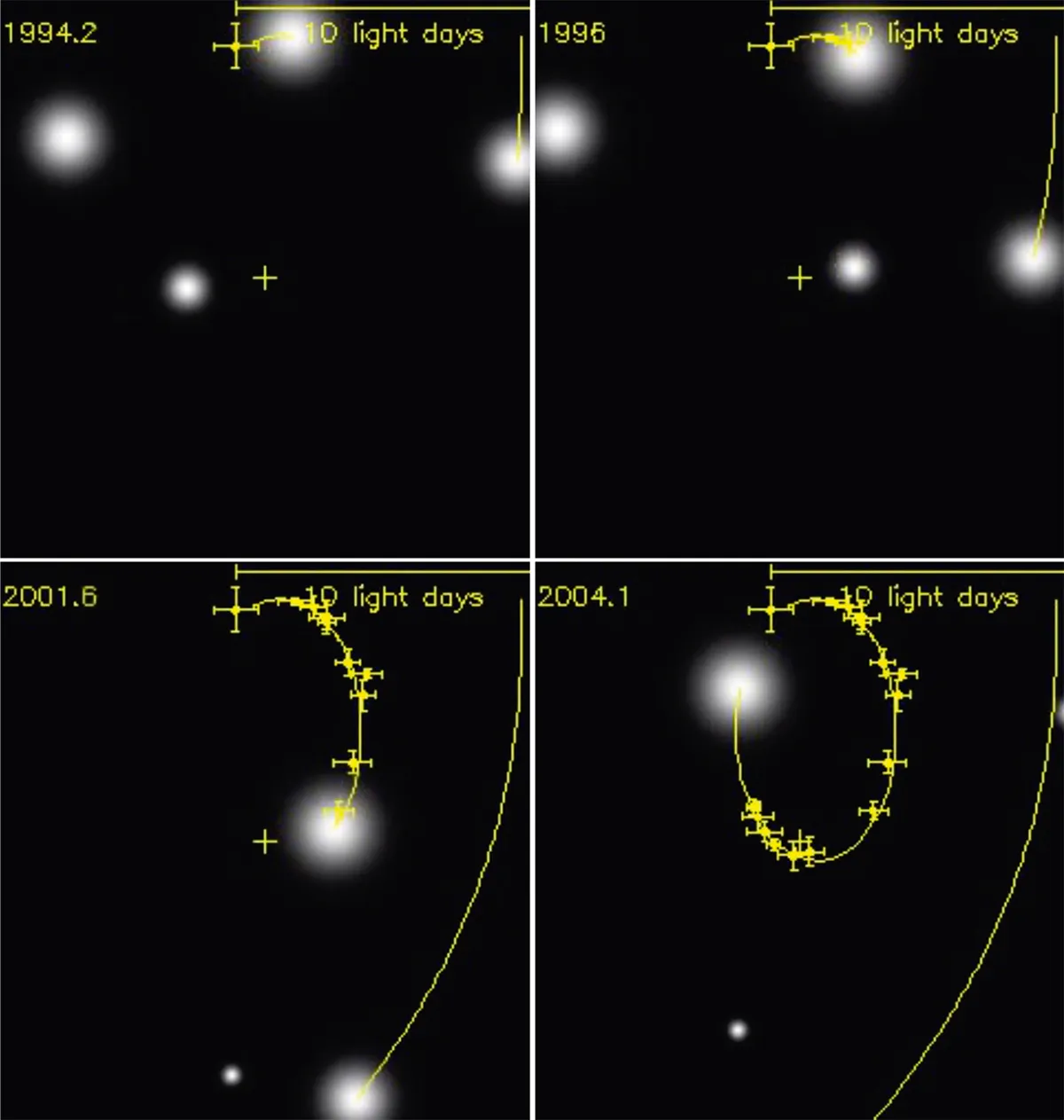
Black holes pull in material at rapid speeds, causing that material to glow in different wavelengths of light.
The Chandra X-ray Observatory, for example, has captured multiple images showing material spiralling into our Galaxy's supermassive black hole and glowing in X-ray light.
We're not seeing the black hole itself directly, but we're seeing the brightness caused by that material glowing in X-ray.

Or we can also see supermassive black holes through the effects of gravitational lensing, whereby light from a more distant object is bent by the gravity of a closer black hole on its way to our telescopes.
Black holes are also known to fire out jets or flares of material into space, and these can be seen too.
The James Webb Space Telescope, for example, captured images of flares erupting from Sagittarius A*, glowing in infrared.

Where black holes come from
The origin of supermassive black holes is still uncertain, but observations of very distant (and therefore very old) galaxies show that they existed within the first billion years of the Universe.
There are two main theories: either they began from the black holes left by supermassive stars in the early Universe and grew over time, or they formed directly from the collapse of giant gas clouds.
The most massive could be the result of two supermassive black holes merging in a violent collision of galaxies.
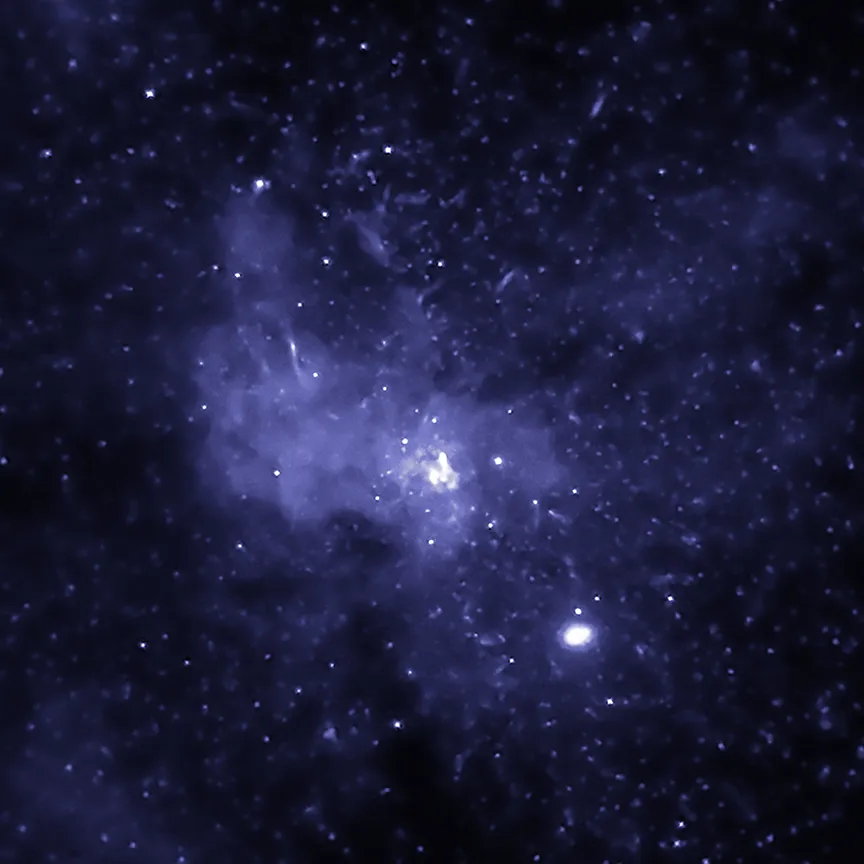
When black holes glow
As we've said, black holes are difficult to observe, precisely because they don’t reflect light or emit it.
Their gravitational pull is so extreme that beyond a certain point, the event horizon, not even light can escape the black hole.
Any matter that crosses this point will inevitably end up at the singularity.
As they don’t emit light, we can only observe black holes indirectly, by measuring their effect on spacetime and on things we can see.

Around the event horizon, a swirling ring of hot gas and dust orbits the black hole: the accretion disc.
This ring is superheated because of the black hole’s intense gravitational pull, which makes it ‘glow’ and emit electromagnetic radiation.
At the ‘last photon orbit’, particles of light walk a narrow tightrope, skirting around the black hole without plunging into it.
These are what cause the glowing orange doughnuts visible in the famous images taken by the Event Horizon Telescope of Sgr A* at the centre of the Milky Way and M87* in the Messier 87 galaxy.
These are probably the most famous images showing the effects of black holes ever captured, and made headlines around the world when they were released.
The Event Horizon black hole images
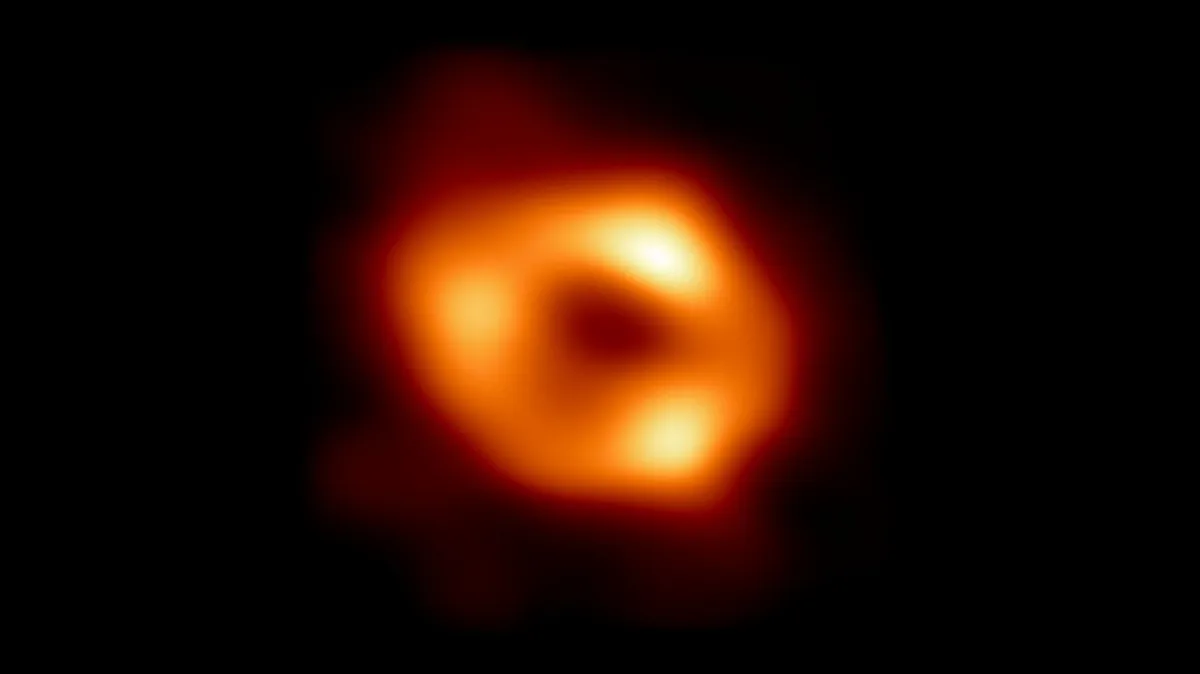
As bodies move through the Universe, they emit gravitational waves that stretch and squeeze anything they pass through by a tiny amount.
When two black holes merge, they create immense gravitational radiation, which can be picked up by gravitational-wave detectors on Earth.
These detectors have two 4km-long (2.5-mile) arms. Light travels down each arm and is reflected back at the end, before both beams are picked up by the detector.
By comparing the two light beams using a technique called interferometry, the detector can see if they’ve been stretched or squeezed by passing gravitational waves.
This allows astronomers to reveal the properties of the black holes that created the waves.
In 2019, the first direct images of a black hole were taken by the Event Horizon Telescope (EHT).
This is a global network of up to 11 radio telescopes, working together to create a telescope with the effective diameter of Earth.
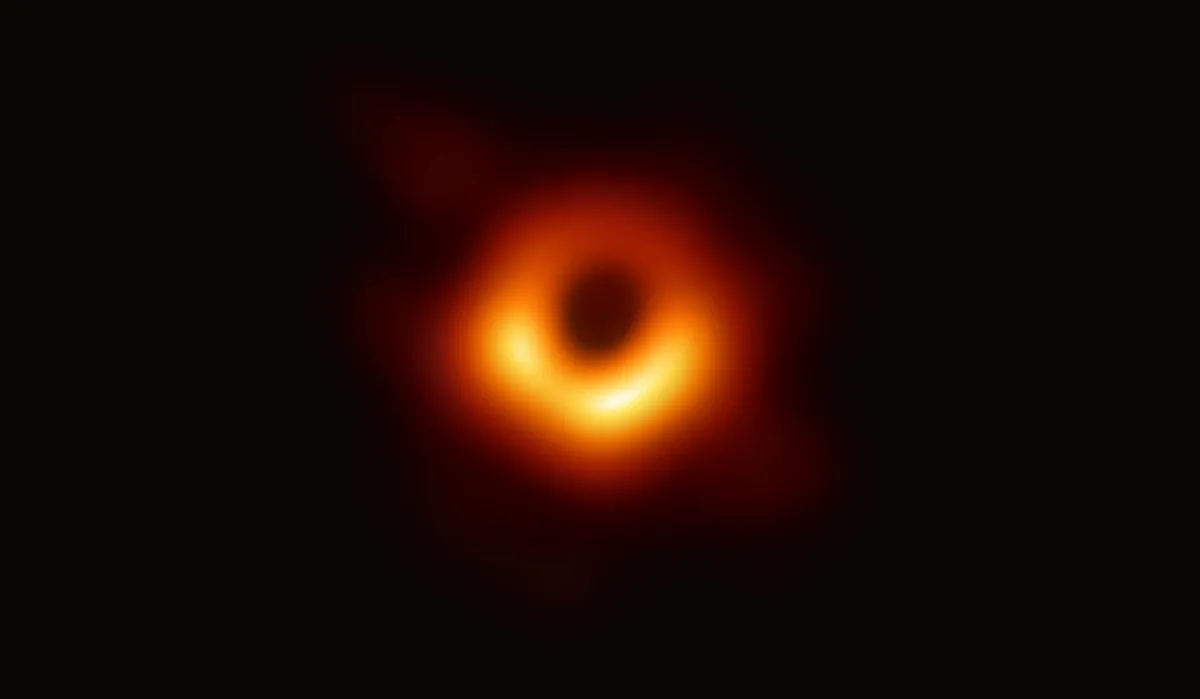
As the angular resolution of a telescope depends on its diameter, this was able to resolve the ‘shadow’ of a black hole’s event horizon.
The team were able to capture the supermassive black hole in giant galaxy M87, as well as the one at the heart of our own Milky Way Galaxy.
Black holes can also produce relativistic jets as a result of feeding upon nearby stars, gas and dust.
These near-lightspeed beams of particles and radiation extend far into space and are detected on Earth as sudden bursts of radiation as we cross the line of the beam.
Seeing images of black holes would have been unthinkable not so long ago.
While they are still phenomena shrouded in mystery, who knows where the science might take us next?


